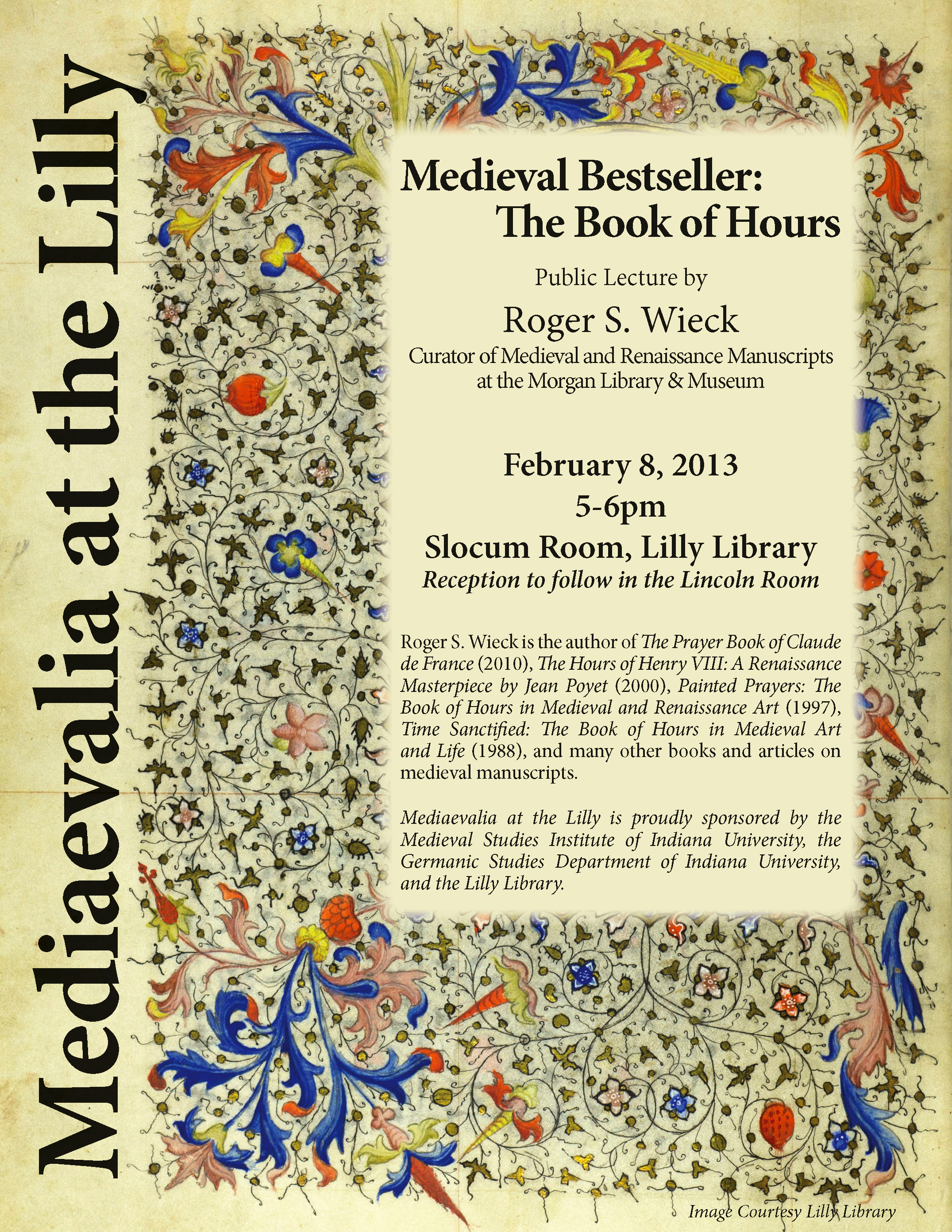Roger S. Wieck
February 8, 2013
Slocum Room, Lilly Library
Roger S. Wieck is Curator of Medieval and Renaissance Manuscripts at the Morgan Library & Museum; he has also held curatorial positions at the Walters Art Museum and the Houghton Library at Harvard. He is the author of The Prayer Book of Claude de France (2010), The Hours of Henry VIII: A Renaissance Masterpiece by Jean Poyet (2000), Painted Prayers: The Book of Hours in Medieval and Renaissance Art (1997), Time Sanctified: The Book of Hours in Medieval Art and Life (1988), and many other books and articles on medieval manuscripts.

 The College of Arts
The College of Arts